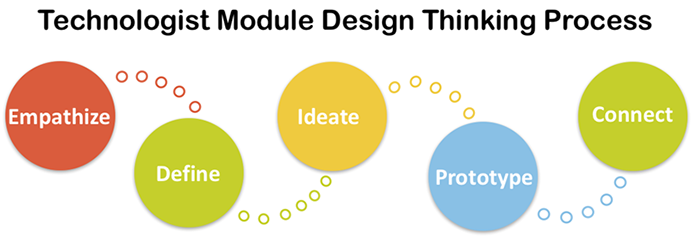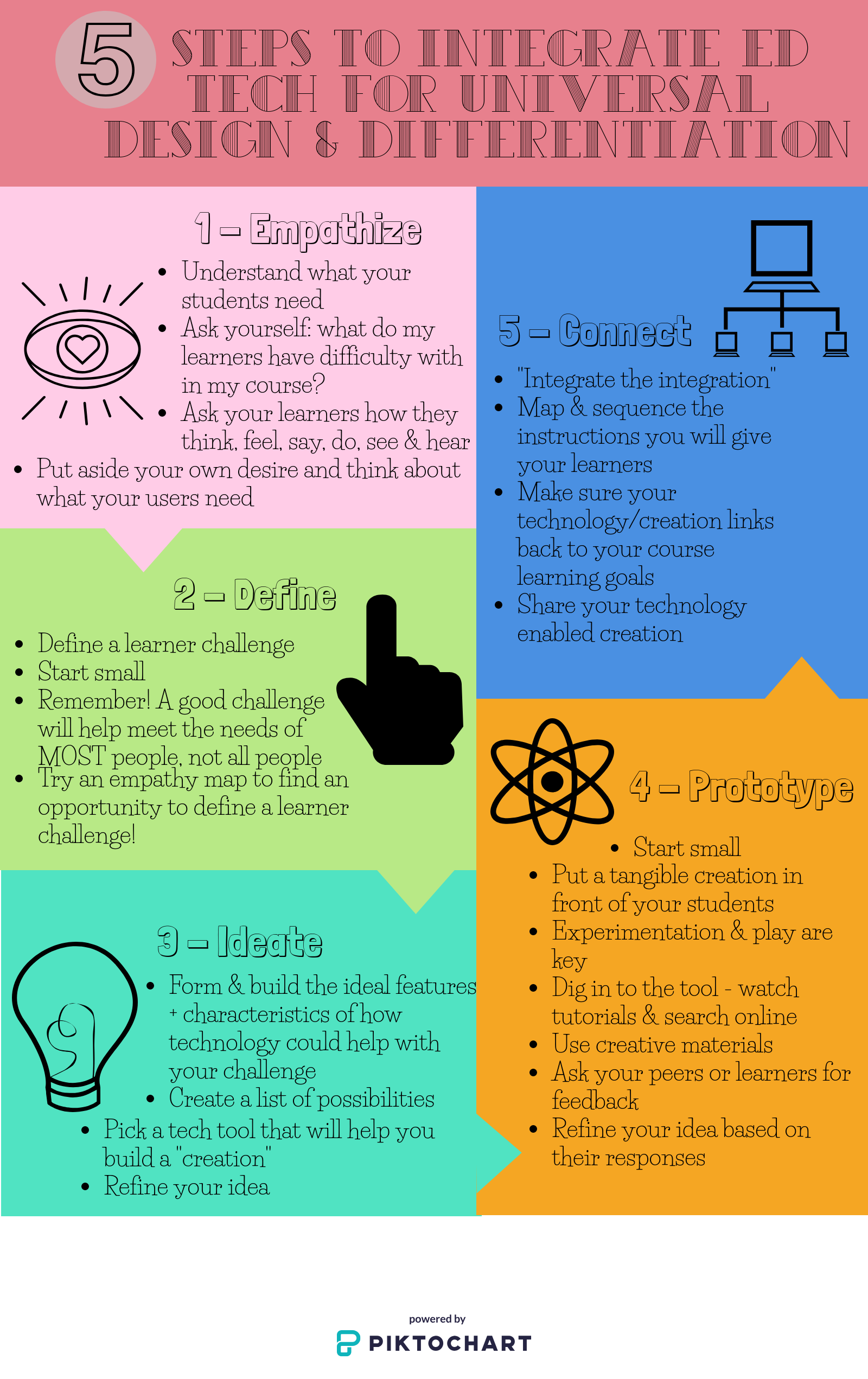I have chosen to use Piktochart to create an infographic for a second time for my reflection artifact, because I received some valuable feedback the first time I used it and I have applied the suggestions that were offered to me to create a more effective product. The first time I used Canva, and found that there were more choices, however I did find Piktochart to be user friendly. My biggest complaints about Piktochart is the inability to save my image as a PDF or in High Quality without paying for a subscription. Since it was my second time creating an infographic, I decided not to use a template this time, in order to further challenge myself.
The Technologist module outlines how to select, use and integrate technology tools effectively in a way that supports, facilitates and enriches learning challenges and experiences for students. This is very much in line with the SAMR technology integration model that outlines the different levels of pedagogical integration – we want to integrate technology into our lessons in a meaningful way, aiming to implement tools that will modify or redefine a task. We can use the process of Design Thinking, which involves the learners in the process in finding a solution to a problem or challenge, because ultimately, they are the ones who will benefit from the solution, and their input is therefore valuable. The process involves 5 steps: empathize with students’ to identify areas in your teaching where they are having difficulties, define a challenge, ideate by building a listing the ways that technology could address the challenge, create a prototype and seek feedback, then finally connect and integrate it into practice.

I think the Design-Thinking process is a great way to start thinking about technology integration in my own classroom, because it is so important to involve students in the process. During my placements, I always asked my students for feedback since everything we do in teaching is to benefit their learning. Although researching and collaborating with other educators to determine strategies is important, it’s the students who benefit from our choices, which makes their feedback valuable. Starting with empathy is the best approach. As a teacher, it is crucial to place yourself in the shoes of your students, and make sure that your teaching practices are suiting their needs. Differentiated instruction isn’t only for students with a formal Individual Education Plan, but rather to help educators reach all of their students by enabling access of information and demonstration of understanding through multiple means of engagement, representation and action. Instead of imagining one specific profile of student when we design our lessons, we need to think of students as a unique group of individuals with varying abilities, identities and strengths to allow everyone to be successful.
The Design-Thinking process is definitely the way I will begin to think about which ed-tech tools I will integrate into my lessons to favour universal design and differentiation. Reflecting on our chosen tools is certainly the best way to integrate technology in a meaningful way and ensure an inclusive learning community within the classroom.

